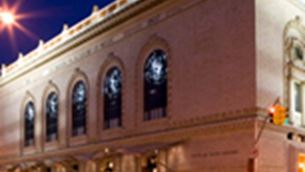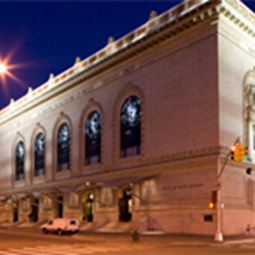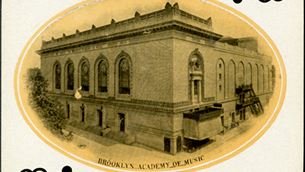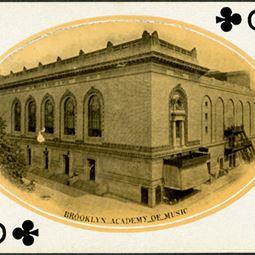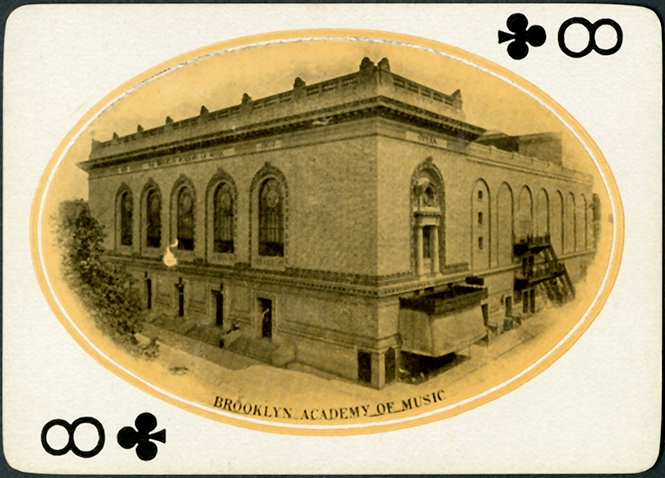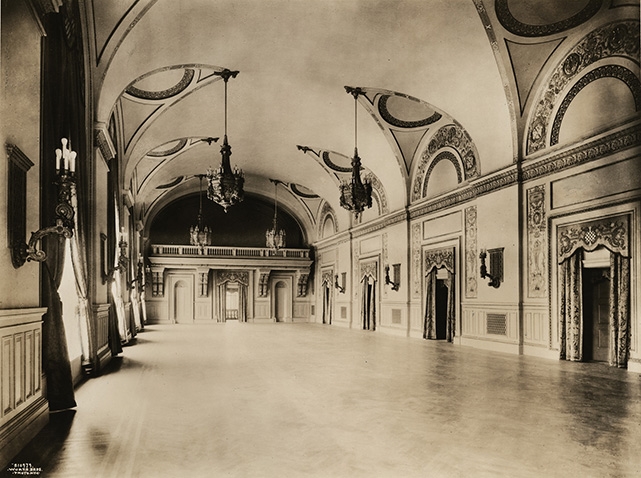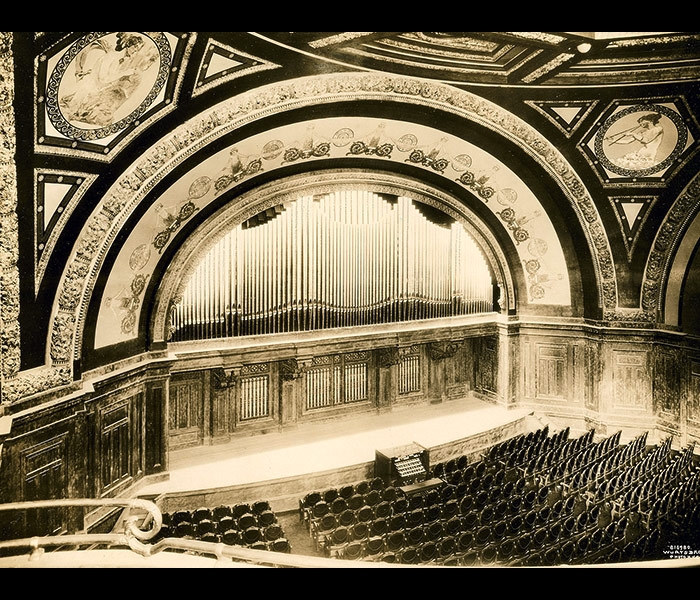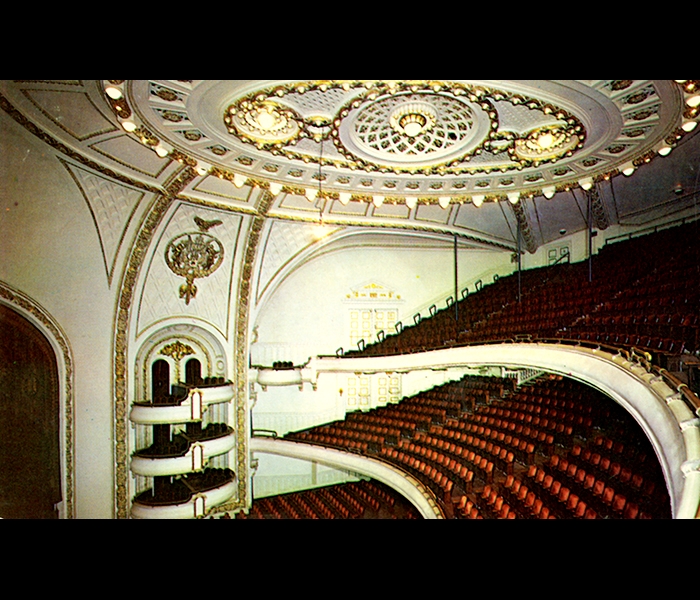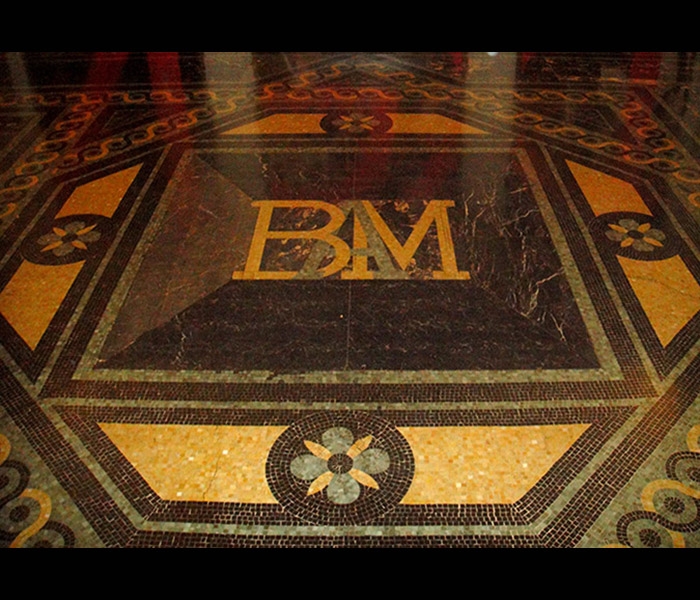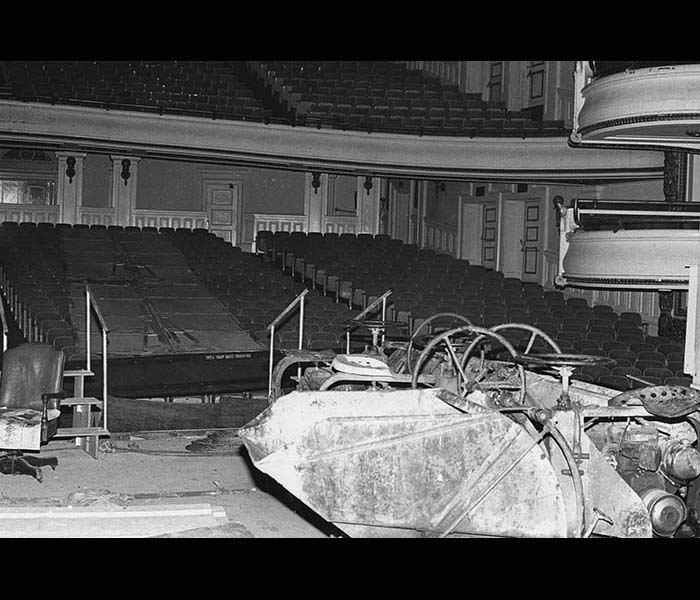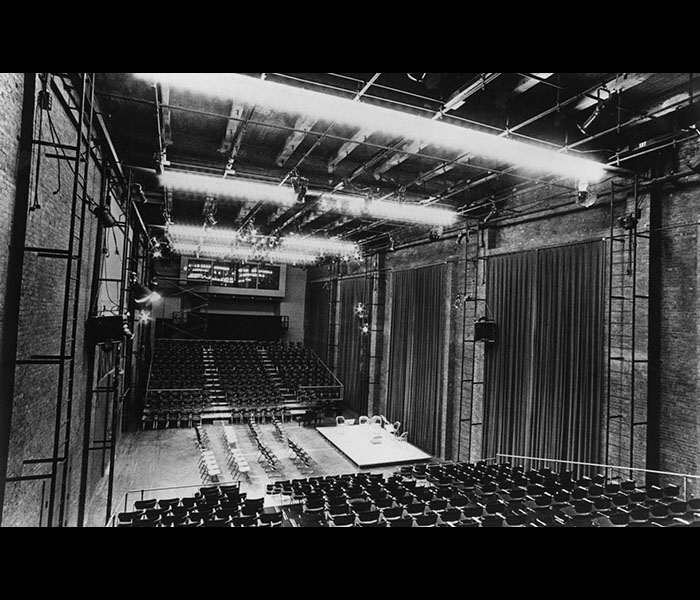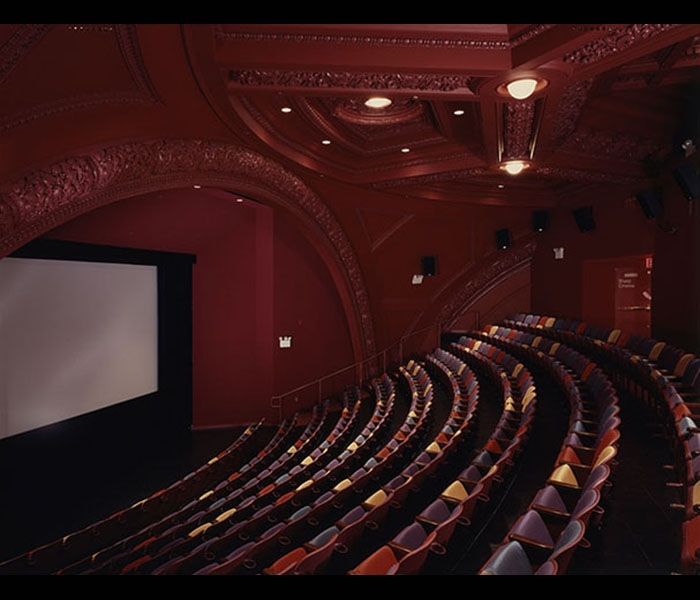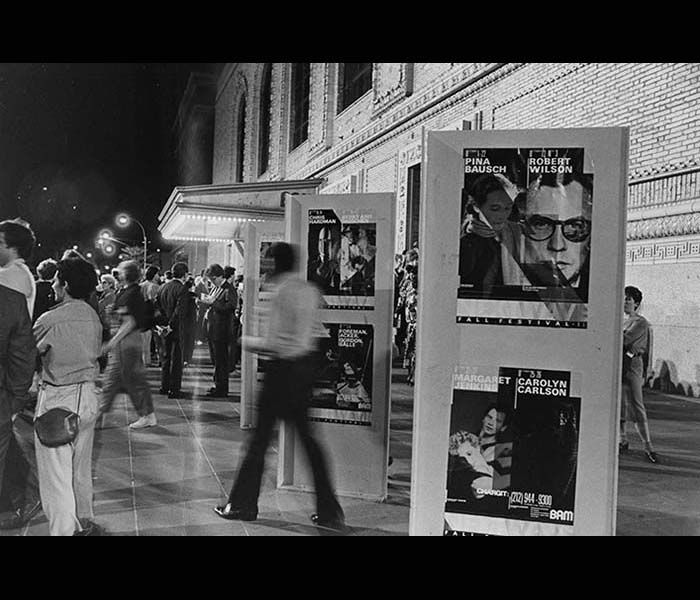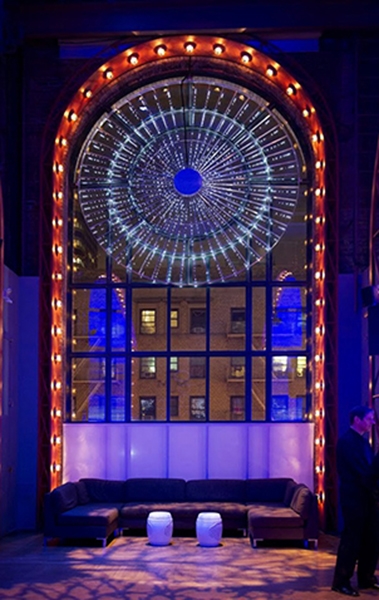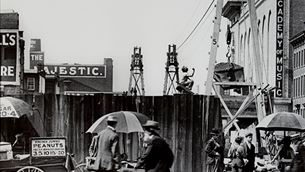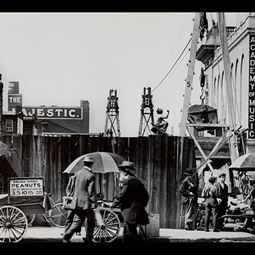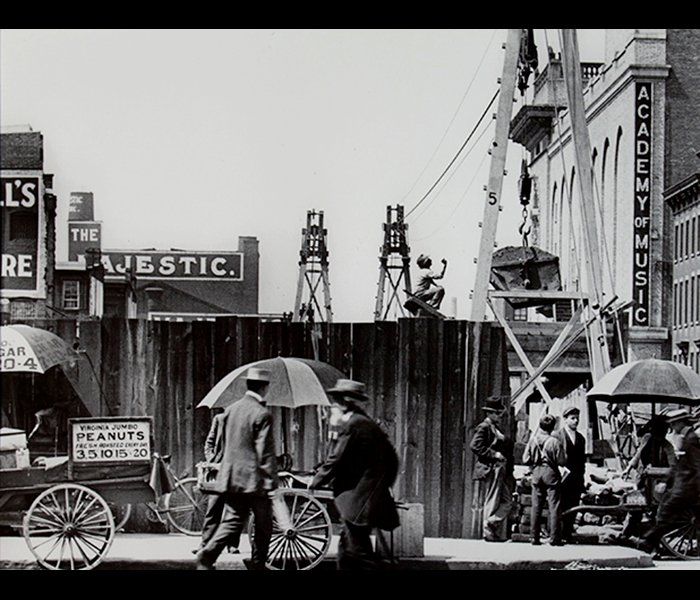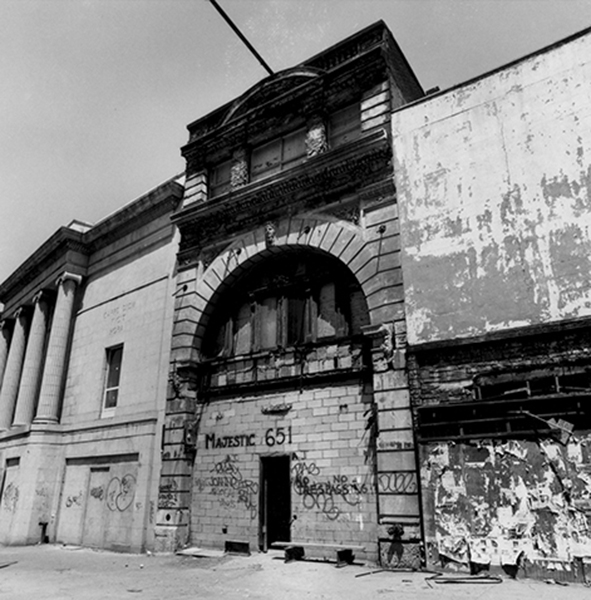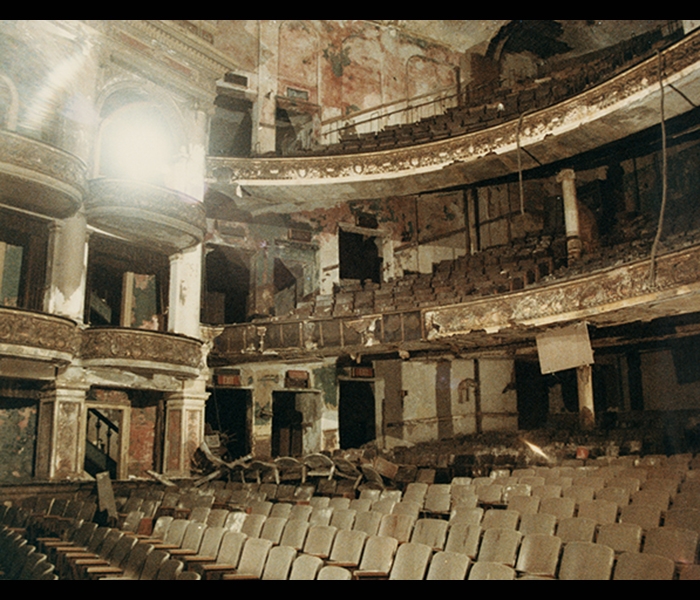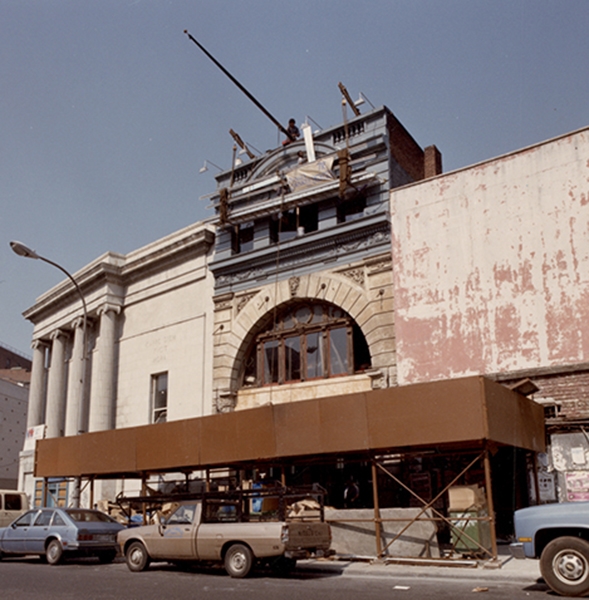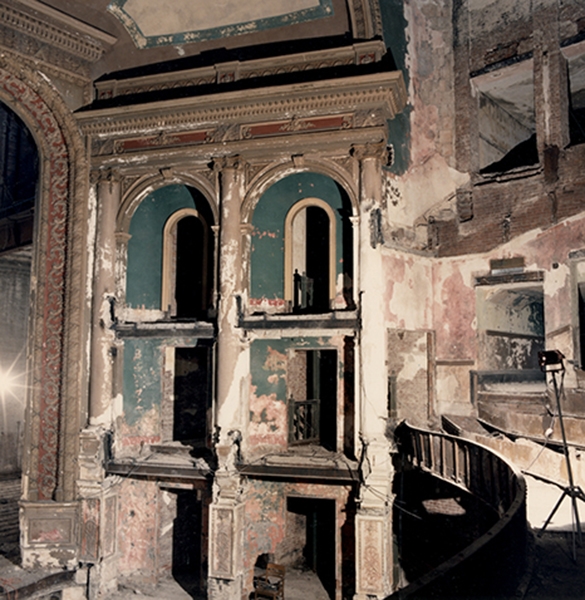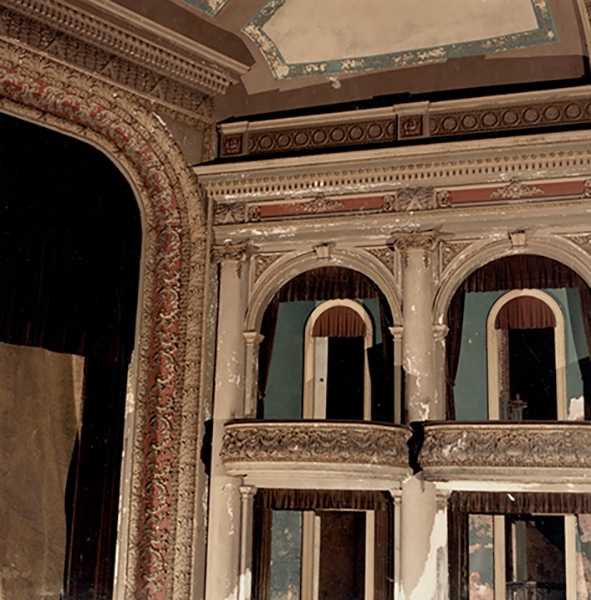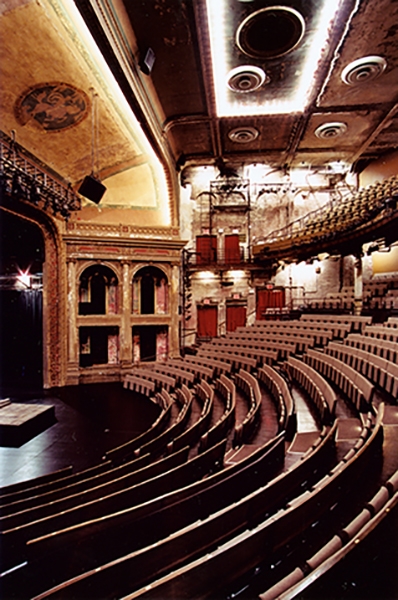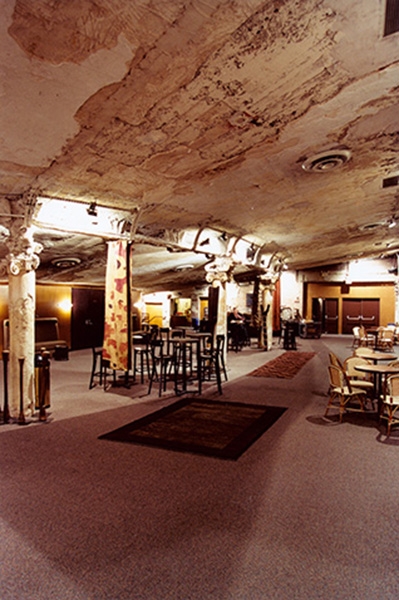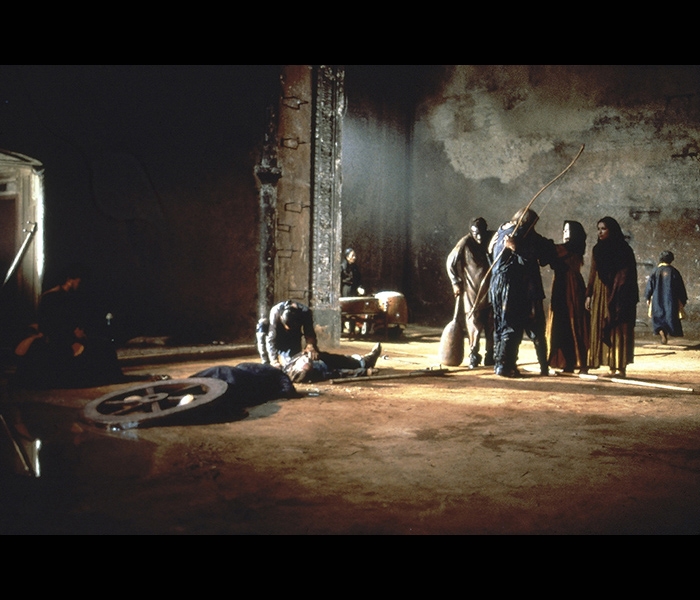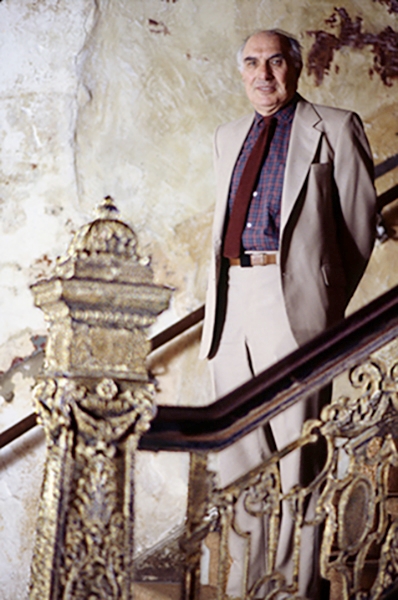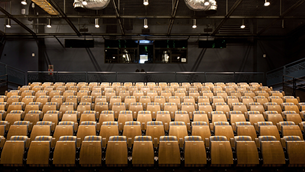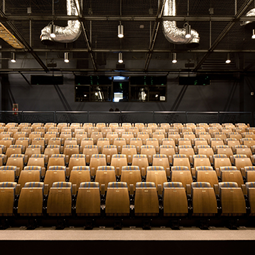History
BAM Buildings
Introduction
When the original Brooklyn Academy of Music on Montague Street was destroyed by fire in November 1903, the scions of Brooklyn worked quickly to construct an even grander building. In April 1906 the cornerstone was laid at BAM’s present site, 30 Lafayette Avenue. Since then, artistic needs and intriguing opportunities have inspired further growth.
BAM now inhabits three performance and mixed-use venues: the Peter Jay Sharp Building, the Harvey Theater, and the Fisher. Further growth will be accommodated in a building under construction on Ashland Place. A cultural space there will be named the “BAM Karen,” in honor of outgoing president Karen Brooks Hopkins, who retired in the spring of 2015.
BAM now inhabits three performance and mixed-use venues: the Peter Jay Sharp Building, the Harvey Theater, and the Fisher. Further growth will be accommodated in a building under construction on Ashland Place. A cultural space there will be named the “BAM Karen,” in honor of outgoing president Karen Brooks Hopkins, who retired in the spring of 2015.
Montague Street
Brooklyn Academy’s first building opened at 176 Montague Street in 1861, was renovated in 1884, and was destroyed by fire in 1903.
In 1858 the Brooklyn Philharmonic Society proposed building a cultural center, and the elite of Brooklyn took on the task. In 1859, the Brooklyn Academy of Music was incorporated “for the purpose of encouraging and cultivating a taste for music, literature and the arts.” The architect, Leopold Eidlitz, a founding member of the American Institute of Architects, was prominent in his own right. He had worked with major architects and designers of the day, including Richard Upjohn, H.H. Richardson, and Frederick Law Olmsted. Eidlitz’s works include the New York State Capitol, P.T. Barnum’s “Iranistan,” the Tweed Courthouse, New York City’s former Temple Emanu-El (destroyed in 1927), and the Broadway Tabernacle. The Brooklyn Academy of Music building opened on January 16, 1861. It housed a 2200-seat theater and a smaller hall. It presented a variety of performances and events, including Edwin Booth’s performance of Hamlet, the Brooklyn and Long Island Sanitary Fair (which raised funds to aid sick and wounded Union Civil War soldiers), anti-slavery talks, the celebration for the opening of the Brooklyn Bridge, and a reading by Mark Twain.
In 1858 the Brooklyn Philharmonic Society proposed building a cultural center, and the elite of Brooklyn took on the task. In 1859, the Brooklyn Academy of Music was incorporated “for the purpose of encouraging and cultivating a taste for music, literature and the arts.” The architect, Leopold Eidlitz, a founding member of the American Institute of Architects, was prominent in his own right. He had worked with major architects and designers of the day, including Richard Upjohn, H.H. Richardson, and Frederick Law Olmsted. Eidlitz’s works include the New York State Capitol, P.T. Barnum’s “Iranistan,” the Tweed Courthouse, New York City’s former Temple Emanu-El (destroyed in 1927), and the Broadway Tabernacle. The Brooklyn Academy of Music building opened on January 16, 1861. It housed a 2200-seat theater and a smaller hall. It presented a variety of performances and events, including Edwin Booth’s performance of Hamlet, the Brooklyn and Long Island Sanitary Fair (which raised funds to aid sick and wounded Union Civil War soldiers), anti-slavery talks, the celebration for the opening of the Brooklyn Bridge, and a reading by Mark Twain.
Peter Jay Sharp Building
After Brooklyn Academy of Music's first building on Montague Street burned in 1903, Brooklyn Borough President Martin W. Littleton engaged prominent Brooklynites to rehouse Brooklyn's cultural Academy and its educational partner the Brooklyn Institute. Within five years, theater architects Herts & Tallant had built a large, flexible structure on Lafayette Avenue, a multi-story building with a main façade in the Beaux Arts style. Littleton summarized the mission of the new space:
"…a place where our ever-swelling population might gather to gratify its passion for music, to satisfy its thirst for knowledge, to minister to its love for social communion and to appeal to its patriotism in the great struggles of popular politics."
To promote the goal of social communion, the design included a 5,000 square foot grand foyer where audience members circulated before entering various venues. The principle space in the building, the grand Opera House, boasted two balconies and 2,200 seats. A concert hall used for both concerts and lectures also had its entrance via the main lobby. That space has now been subdivided into four movie theaters, with much of the original decorative detail preserved. An ornate ballroom on the second floor was redesigned in 1973 as the Lepercq Space, an enormous "black box" theater, that was redesigned by Hugh Hardy in 1997 as a multi-purpose space housing BAMcafé. Part of the third floor, above the concert hall and east of the opera house balcony, was reserved for the Brooklyn Institute's offices, which, in addition to the classrooms and 400-seat lecture hall were adapted for administrative use.
Since its opening, BAM's main building has witnessed history-making performances and lectures by a who's who of artists and important figures including Franklin D. Roosevelt and the 1962 American debut of Rudolf Nureyev. Named for Peter Jay Sharp in 2004, it has far exceeded its original turn-of-the century mission, and now prides itself on being the largest venue at the home for adventurous artists, audiences, and ideas.
"…a place where our ever-swelling population might gather to gratify its passion for music, to satisfy its thirst for knowledge, to minister to its love for social communion and to appeal to its patriotism in the great struggles of popular politics."
To promote the goal of social communion, the design included a 5,000 square foot grand foyer where audience members circulated before entering various venues. The principle space in the building, the grand Opera House, boasted two balconies and 2,200 seats. A concert hall used for both concerts and lectures also had its entrance via the main lobby. That space has now been subdivided into four movie theaters, with much of the original decorative detail preserved. An ornate ballroom on the second floor was redesigned in 1973 as the Lepercq Space, an enormous "black box" theater, that was redesigned by Hugh Hardy in 1997 as a multi-purpose space housing BAMcafé. Part of the third floor, above the concert hall and east of the opera house balcony, was reserved for the Brooklyn Institute's offices, which, in addition to the classrooms and 400-seat lecture hall were adapted for administrative use.
Since its opening, BAM's main building has witnessed history-making performances and lectures by a who's who of artists and important figures including Franklin D. Roosevelt and the 1962 American debut of Rudolf Nureyev. Named for Peter Jay Sharp in 2004, it has far exceeded its original turn-of-the century mission, and now prides itself on being the largest venue at the home for adventurous artists, audiences, and ideas.
BAM Harvey Theater
The venue we now know as the "Harvey" first opened in 1904 as the Majestic Theater, one of many theaters in the then-bustling entertainment district in downtown Brooklyn. The Majestic presented a variety of dramas, light opera, musicals, and vaudeville, with brand-name stars such as Katherine Cornell, and it became an important trial theater for productions headed to Broadway, including Noel Coward's Home Chat.
In 1942, the Majestic was transformed into a first-run movie house in elegant European style by a Parisian and his two sons, wealthy showmen who had fled the Nazis. By the 1960s, however, the advent of television and a shift in the population forced the closure and repurposing of theaters in the district.
The Majestic sat abandoned for nearly two decades. In 1986, when BAM President and Executive Producer Harvey Lichtenstein was looking for a location to stage the acclaimed British theater director Peter Brook's nine-hour production of The Mahabharata, he decided to investigate the derelict building he passed on his way to BAM. It was just what he was looking for, similar to alternate spaces being repurposed in Europe, such as Brook's Parisian venue, Les Bouffes du Nord.
Lichtenstein raised funds for an award-winning renovation of the theater, completed in 1987. Retaining original architectural elements, the theater's designers maintained an aged, distressed look that creates a visceral bridge between the past and the future. In 1999, the Majestic was renamed in honor of retiring leader Harvey Lichtenstein.
In 2012, BAM expanded its campus to include the 40,000-square-foot, seven-story BAM Richard B. Fisher Building, named in honor of longtime friend and BAM Endowment Trust Chairman Richard B. Fisher (1936—2004). The BAM Fisher features an intimate and flexible new performance space, adding a third stage for BAM’s world-renowned Next Wave Festival.
The new facility was designed for LEED Gold certification as a green building, and is located at 321 Ashland Place, around the corner from BAM's Peter Jay Sharp Building. Following a new, 21st- century model for an arts center, the BAM Fisher offers affordable ticket prices, subsidized rehearsal and performance spaces, and an expanded roster of talks and education and family programs. The BAM Fisher is a place where artists and community come together, and where the audience is an active participant.
The 2012 inauguration of the BAM Fisher was a cornerstone of BAM's 150th anniversary celebration, and its design and programming signaled a commitment to the future. The building features several spaces:
• Fishman Space, a 250-seat theater
In 1942, the Majestic was transformed into a first-run movie house in elegant European style by a Parisian and his two sons, wealthy showmen who had fled the Nazis. By the 1960s, however, the advent of television and a shift in the population forced the closure and repurposing of theaters in the district.
The Majestic sat abandoned for nearly two decades. In 1986, when BAM President and Executive Producer Harvey Lichtenstein was looking for a location to stage the acclaimed British theater director Peter Brook's nine-hour production of The Mahabharata, he decided to investigate the derelict building he passed on his way to BAM. It was just what he was looking for, similar to alternate spaces being repurposed in Europe, such as Brook's Parisian venue, Les Bouffes du Nord.
Lichtenstein raised funds for an award-winning renovation of the theater, completed in 1987. Retaining original architectural elements, the theater's designers maintained an aged, distressed look that creates a visceral bridge between the past and the future. In 1999, the Majestic was renamed in honor of retiring leader Harvey Lichtenstein.
BAM Fisher
In 2012, BAM expanded its campus to include the 40,000-square-foot, seven-story BAM Richard B. Fisher Building, named in honor of longtime friend and BAM Endowment Trust Chairman Richard B. Fisher (1936—2004). The BAM Fisher features an intimate and flexible new performance space, adding a third stage for BAM’s world-renowned Next Wave Festival.
The new facility was designed for LEED Gold certification as a green building, and is located at 321 Ashland Place, around the corner from BAM's Peter Jay Sharp Building. Following a new, 21st- century model for an arts center, the BAM Fisher offers affordable ticket prices, subsidized rehearsal and performance spaces, and an expanded roster of talks and education and family programs. The BAM Fisher is a place where artists and community come together, and where the audience is an active participant.
The 2012 inauguration of the BAM Fisher was a cornerstone of BAM's 150th anniversary celebration, and its design and programming signaled a commitment to the future. The building features several spaces:
• Fishman Space, a 250-seat theater
• BAM Fisher Hillman Studio, a rehearsal and performance space
• Leavitt Workshop, a classroom
• Scripps Stage, in the Fishman Space
• Stutz Gardens, on the BAM Fisher Rooftop Terrace
• Sharp Lobby, an exhibition space
BAM KBH
The newest addition to BAM is cultural space that will be located in a new 32-story tower that is under construction at 300 Ashland Place, across the street from the Peter Jay Sharp Building and BAM Fisher. The building will support residential, retail, and cultural uses. More than 45,000 square feet will be dedicated to cultural space, which may include cinemas, the BAM Archives, a dance studio, and a public plaza.
At the April 28, 2015 gala celebrating Karen Brooks Hopkins retirement after her 36-year career at BAM, it was announced that the cultural space in the building would be named the “BAM Karen” in her honor.
At the April 28, 2015 gala celebrating Karen Brooks Hopkins retirement after her 36-year career at BAM, it was announced that the cultural space in the building would be named the “BAM Karen” in her honor.
1903 Fire at BAM
-

The Opera House--Inside and Out
The Transformation of the Majestic Theatre
BAM Fisher
-
